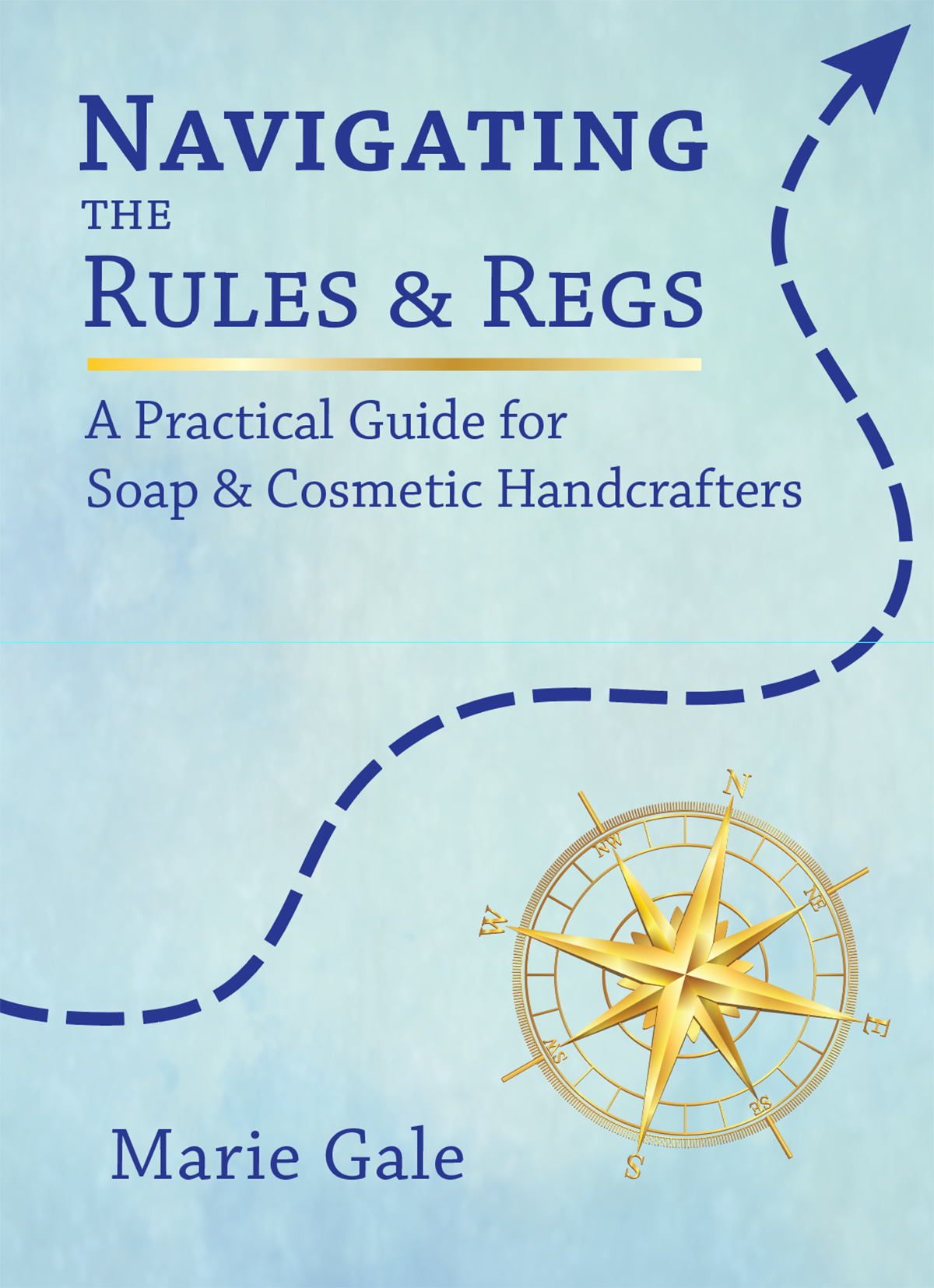Since my last post about natural colorants I’ve gotten some questions about using ingredients that change the color of the soap or cosmetic, where that really wasn’t the point of the ingredient.
Lets review the definitions. I’m just including the important bits, and bolding the really important bits.
Color Additive
Any material that is capable of imparting a color to the product.1
In order for a color additive to be used in a cosmetic, it must first be approved by the FDA for that use. If a color additive is used which is NOT approved, then the cosmetic is considered “adulterated” (and illegal).
Exempt from the Color Additive Regulations:
Directly from the regulations:
(g) For a material otherwise meeting the definition of color additive to be exempt on the basis that it is used (or intended to be used) solely for a purpose or purposes other than coloring, the material must be used in a way that any color imparted is clearly unimportant insofar as the appearance, value, marketability, or consumer acceptability is concerned. (It is not enough to warrant exemption if conditions are such that the primary purpose of the material is other than to impart color.)
21 CFR 70.3(g)
Let’s break that last one down:
- If a material meets the definition of a color additive (that is, it can change the color of the product), but is used for some other purpose, it may be exempt from the regulations ONLY IF any color is clearly unimportant to the appearance, value, marketablility, or consumer acceptability of the product.
- It’s not enough that it’s used for some other purpose.
Pretty Clear Examples:
You put a vanilla fragrance oil in your moisturizing facial soap and it turns the soap brown. The fact that the soap is brown doesn’t do anything to help sell it, doesn’t increase the value, and doesn’t affect whether the consumer thinks the soap is acceptable. You probably don’t even want it to be brown! In that case, the vanilla fragrance oil is not a color additive, even though it does change the color of the soap.
You make a rainbow soap, containing “moisturizing shea butter” (so it is a cosmetic). The rainbow stripes are colored with sage, annatto, paprika, and other herbs and spices. Clearly, the color is important to marketability and consumer acceptance of the soap. It’s pretty hard to sell a rainbow soap that doesn’t have any color or rainbow! In that case, the herbs and spices ARE color additives (and are not approved for use in a cosmetic product).
Not So Obvious Examples:
Sometimes whether it’s a color additive is not so obvious. This is where things get gray, because there aren’t any specific guides and it comes down to what the FDA (or your state) thinks if/when they ever decide you’ve overstepped. Consider these scenarios:
Exfoliant Soap, Orange Scented
Ground orange peel is added to the soap as an exfoliant, but it also adds a slight orange color. Since it is the only exfoliant in the soap, and the orange color is minor, it is probably not a color additive.
You put orange essential oil in the soap, which also adds a small bit of orange color to the soap. Again, it’s not much; probably not a color additive.
The consumer is looking at the product for the scent and the exfoliant properties; whether it is slightly orange colored or not doesn’t make a difference. The consumer would probably buy it even if it were white.
Now you decide to add some paprika to the soap, supposedly to add a little more “scrubbiness” and because paprika is high in antioxidants.2 Oh, and by the way, the paprika makes the soap a nice, rich, orange color. Does that rich orange help to sell the product and make it more enticing to the consumer? Even though the paprika may have some other benefits, the orange color makes a big difference to the saleability, so it would very likely be considered a color additive.
Colored Bath Bombs
You make a set of bath bombs in pink, green, and brown. They are packaged in a cellophane bag and called “Garden Delight Bath Bombs” with a picture of a flower in brown dirt with a green stem and a pink flower.
The bath bombs are made using beet root powder, ground nettle leaf, and cocoa powder respectively, giving them the signature garden colors.
Athough with some research you might be able to come up with some reason for beet root, nettle and cocoa to be included in the bath bombs, it would be probably be fairly insignificant. But without those additives the bath bombs would be white; it’s difficult to market “garden delight” packaged for a certain color combination that doesn’t have any color.
Even if there were another reason for the additives, since the color imparted is clearly important (NOT unimportant) to the value, marketability and consumer perception of the product—they ARE color additives. And, in this case, since they are not approved as color additives in cosmetics, the product would be adulterated (and illegal).
What about Soap?
Again, the color additive regulations apply to food, drugs, and cosmetics. They do not apply to soap that is exempt from the definition of a cosmetic.
In its definition of the term cosmetic, the Federal Food Drug, and Cosmetic Act specifically excludes soap. The term soap is nowhere defined in the act. In administering the act, the Food and Drug Administration interprets the term “soap” to apply only to articles that meet the following conditions:
Directly from the regulations:
- (1) The bulk of the nonvolatile matter in the product consists of an alkali salt of fatty acids and the detergent properties of the article are due to the alkali-fatty acid compounds; and
- (2) The product is labeled, sold and represented only as soap.
21 CFR 701.20(a)
So long as your soap remains exempt from the definition of a cosmetic, then you can use “natural colorants” that are not approved for use in cosmetics.




Leave a Reply